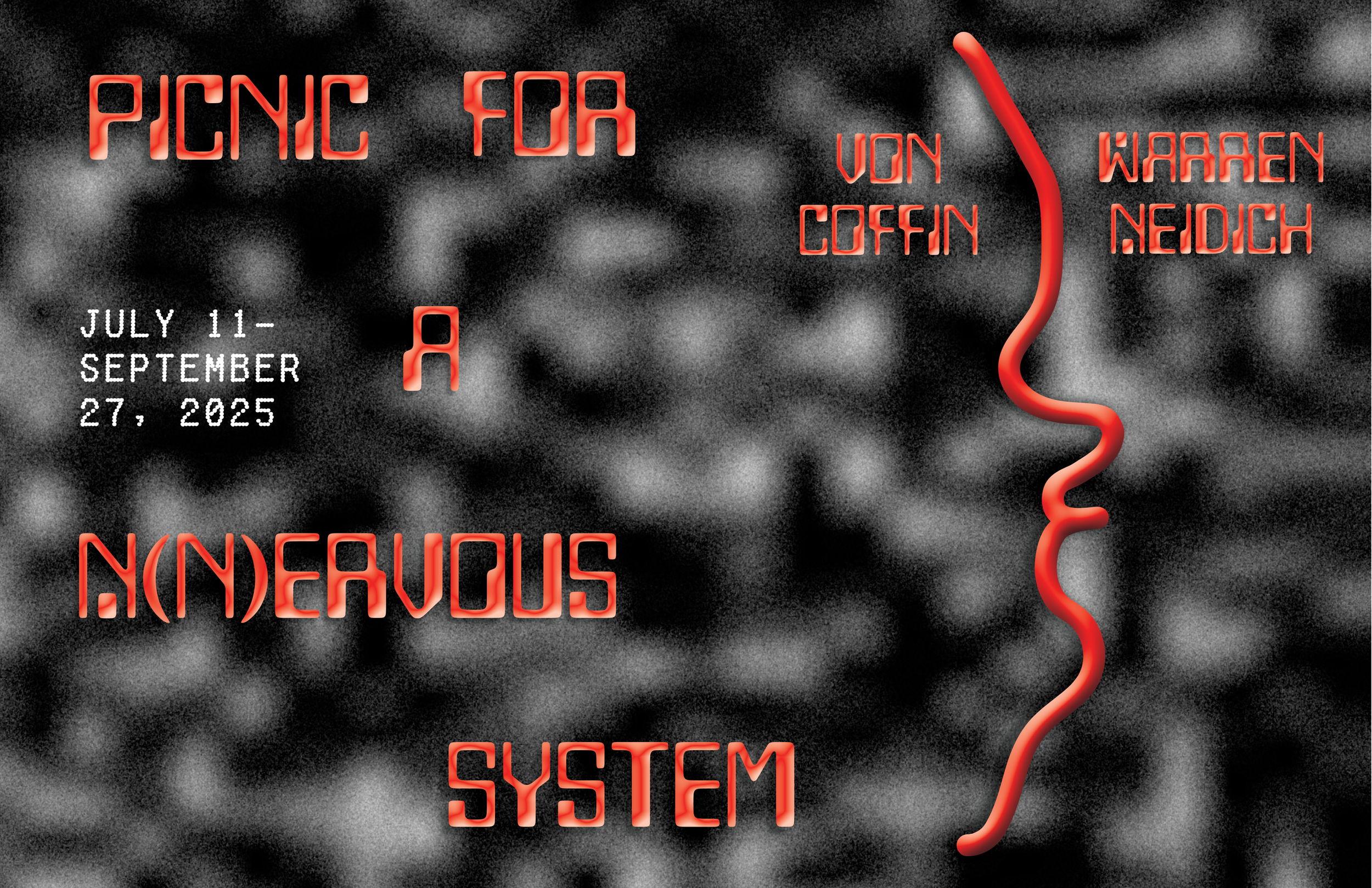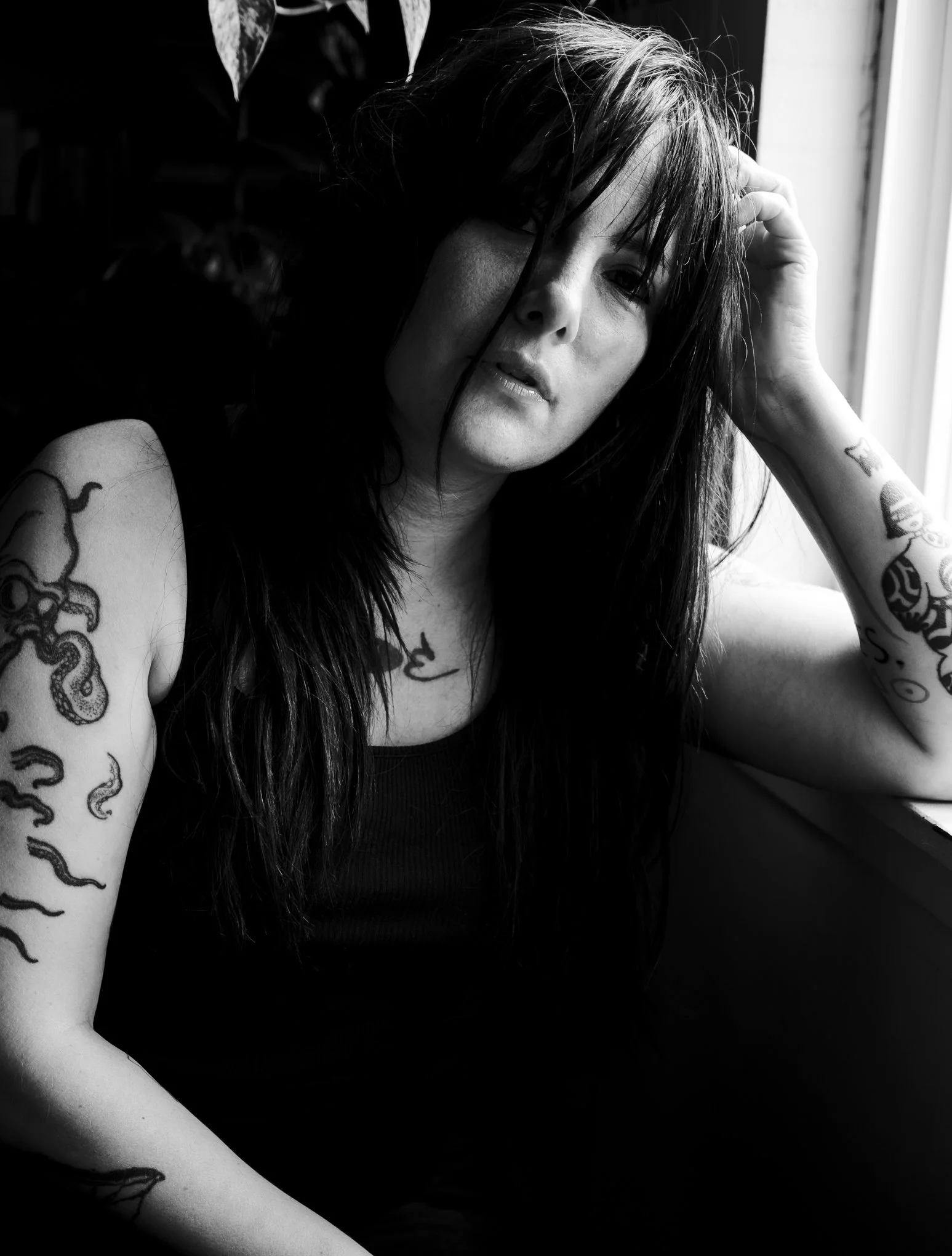Picnic For a N(n)ervous System: Von Coffin & Warren Neidich
July 11–September 27, 2025
Curator’s Tour - September 27, 1pm.
In Picnic For a N(n)ervous System, Von Coffin and Warren Neidich estrange processes of attention, sense-making and cognition. Critically engaging with emerging theories of the embodied, embedded, enacted and extended mind, the artists use painting, neon and sculpture to activate uncommon neural pathways, modulating our world-making capacities towards the emergence of diverse neural architectures—and, correspondingly, a smorgasbord of modes of thought.
Brochure available here and VPL Reading List available here.
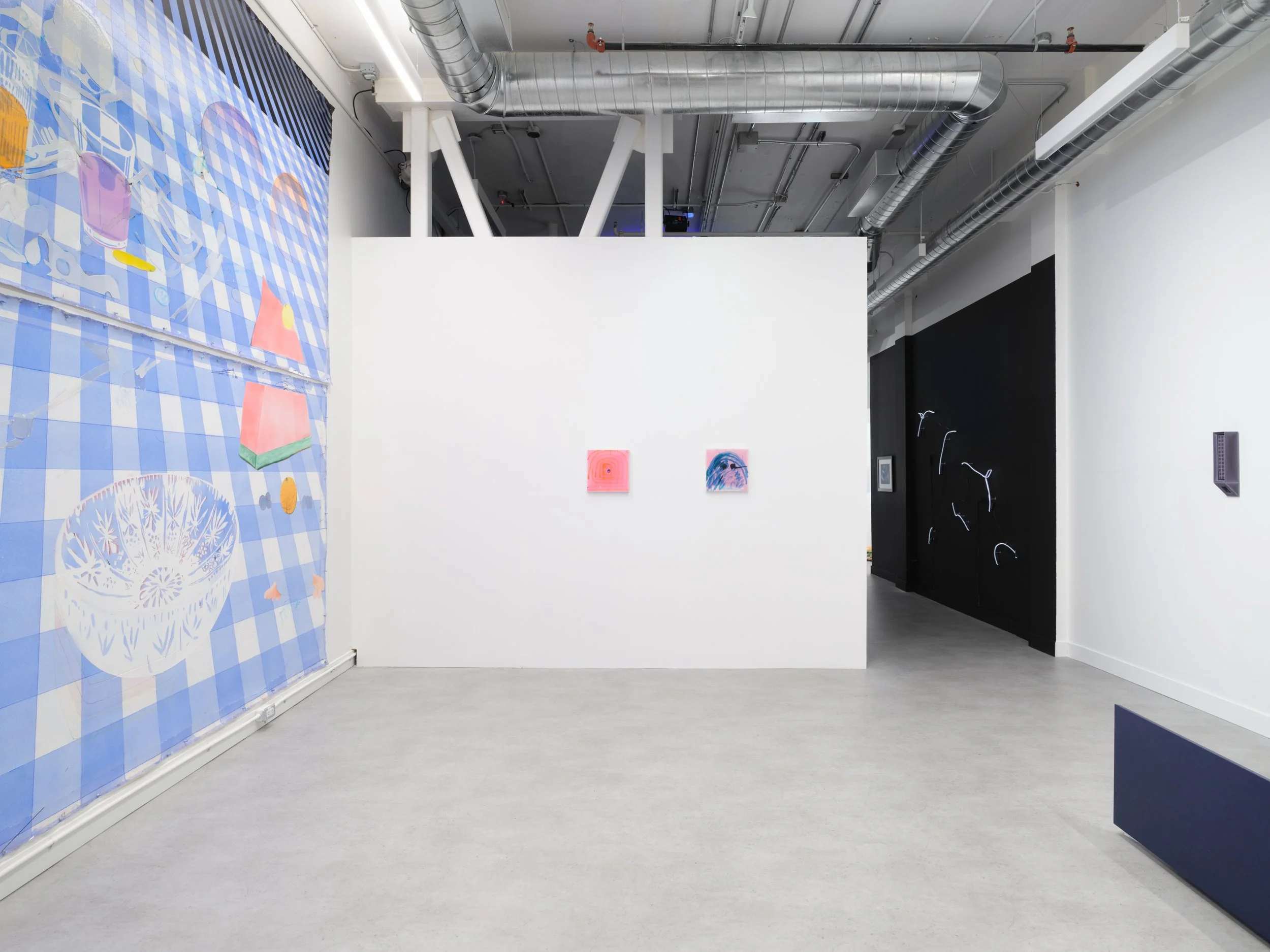
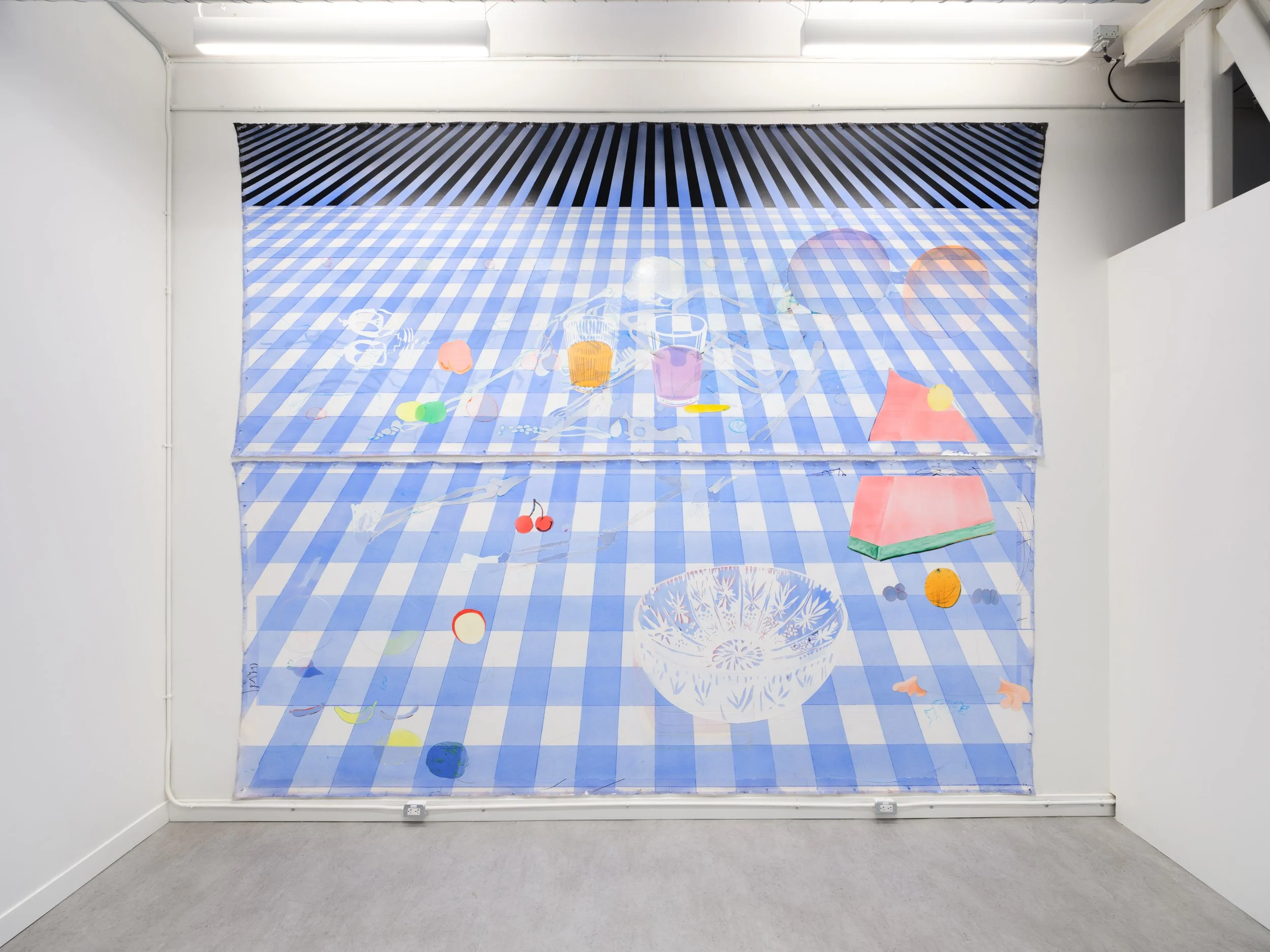


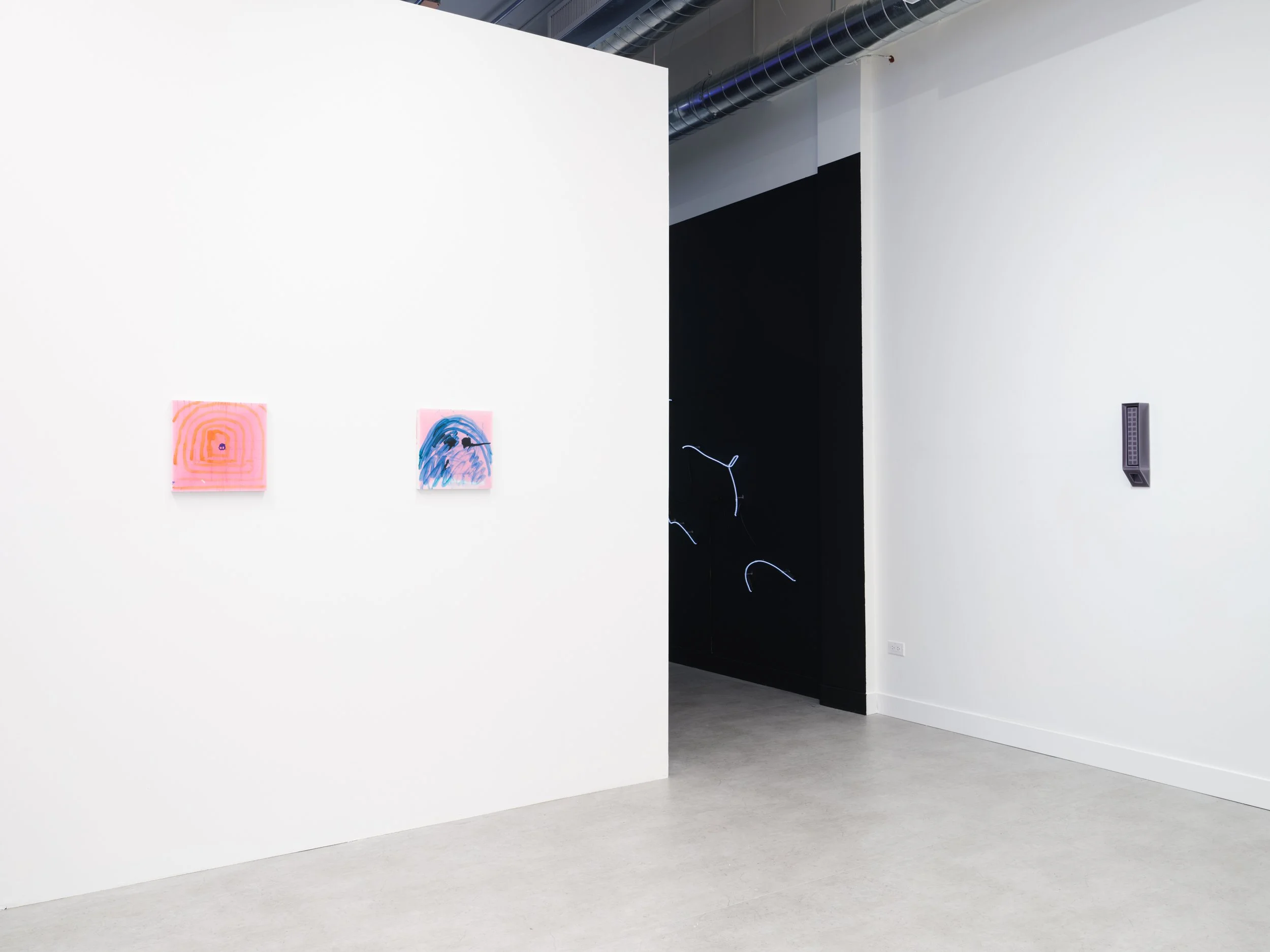
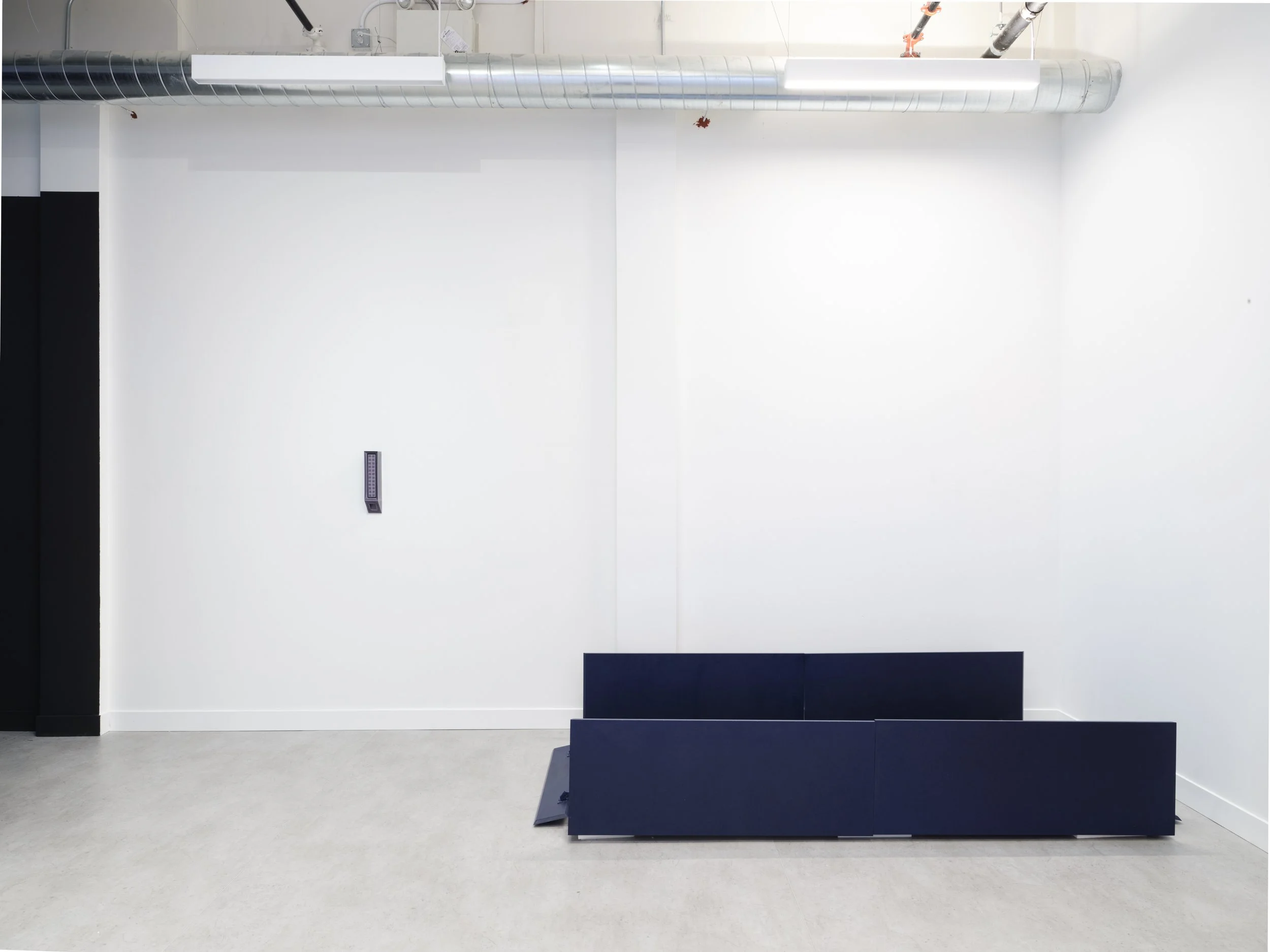
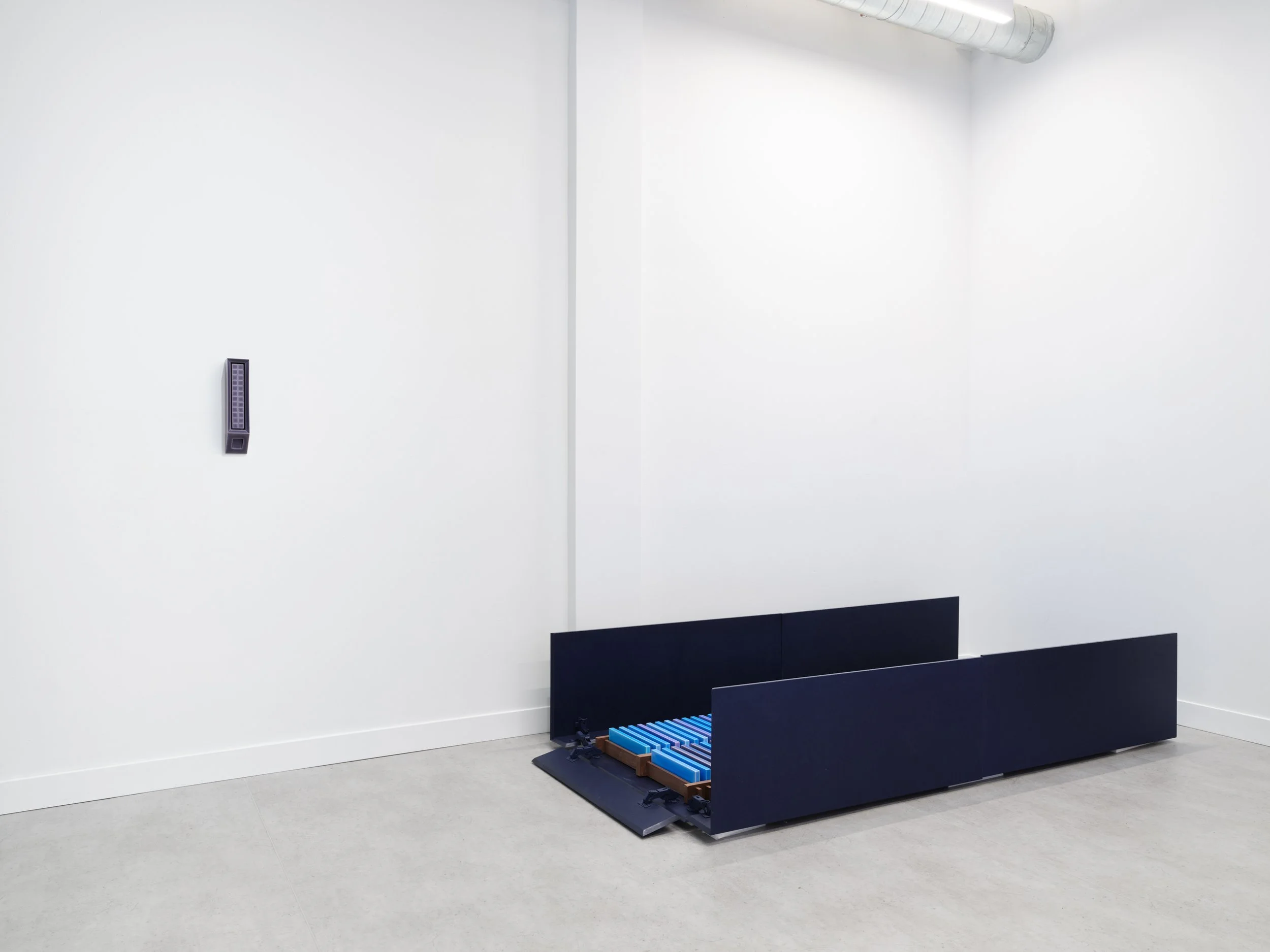
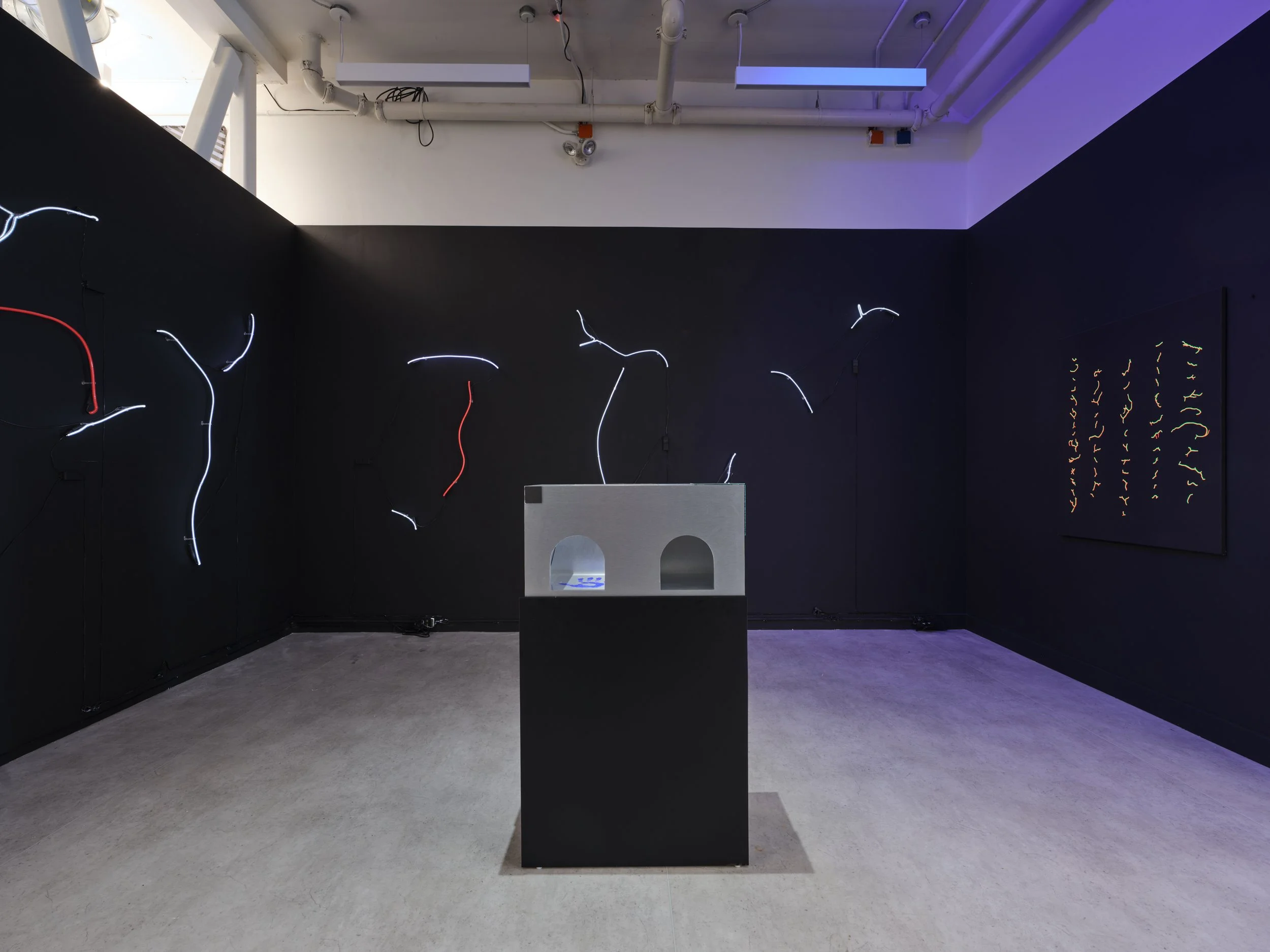

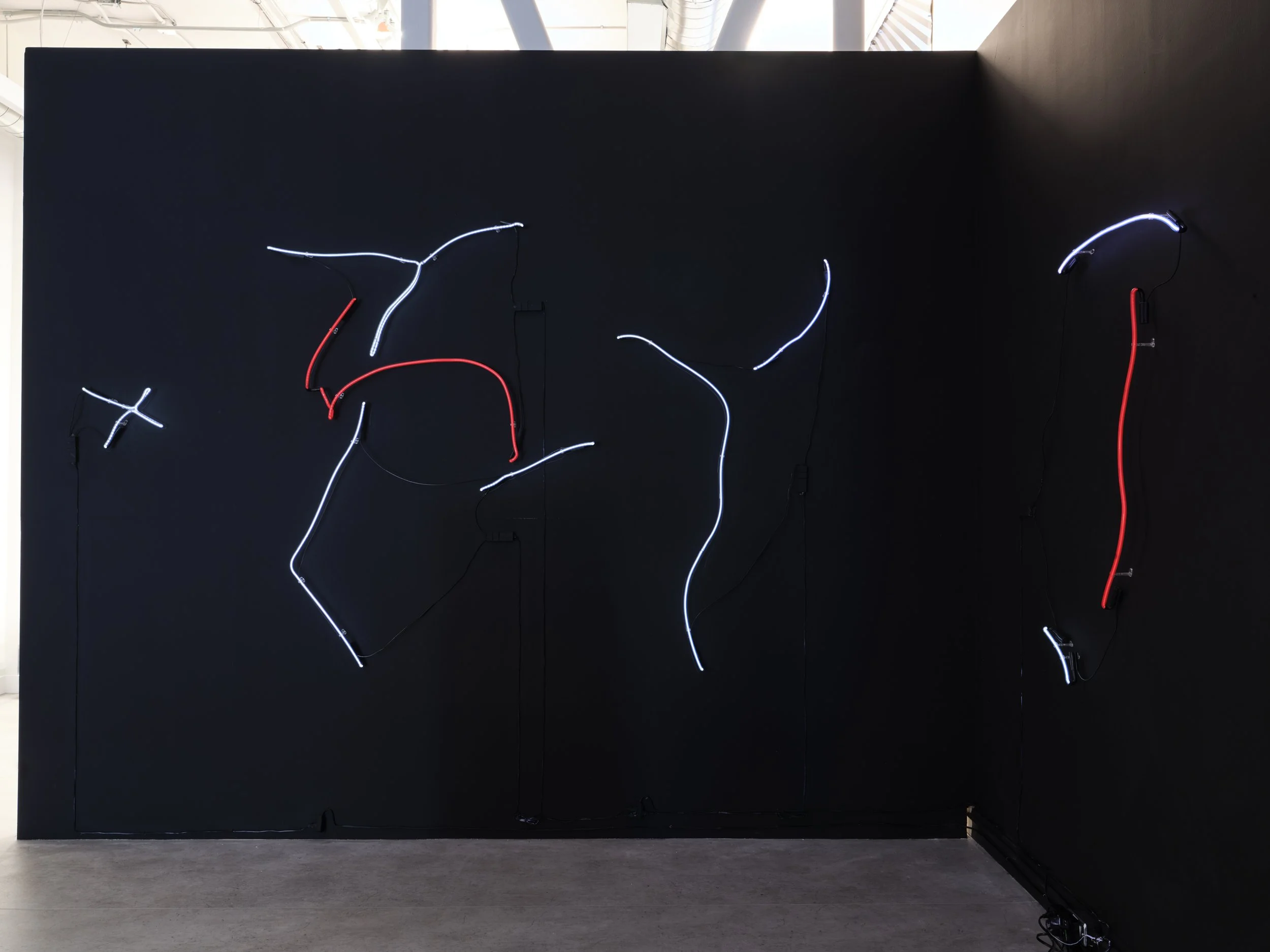
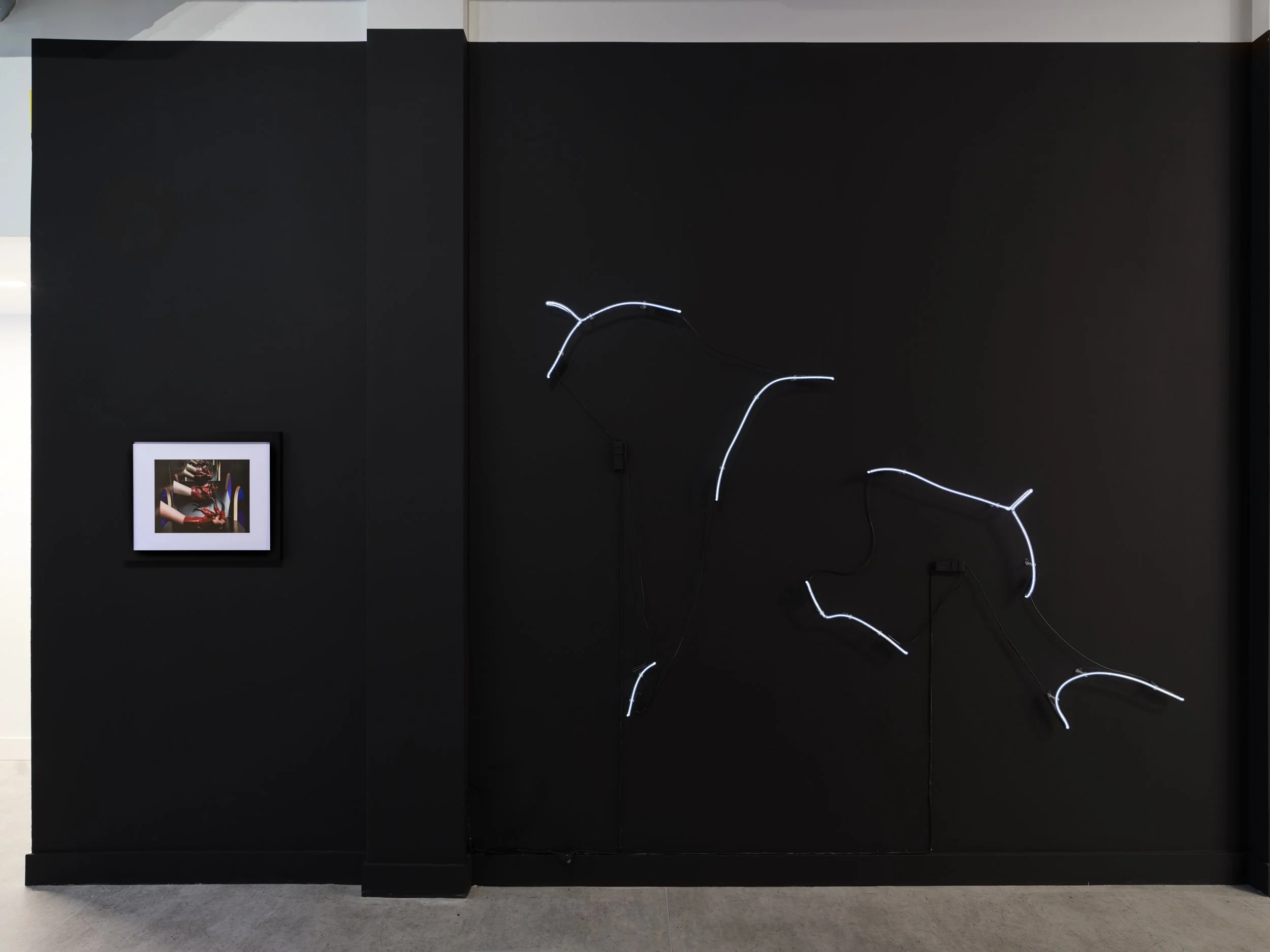

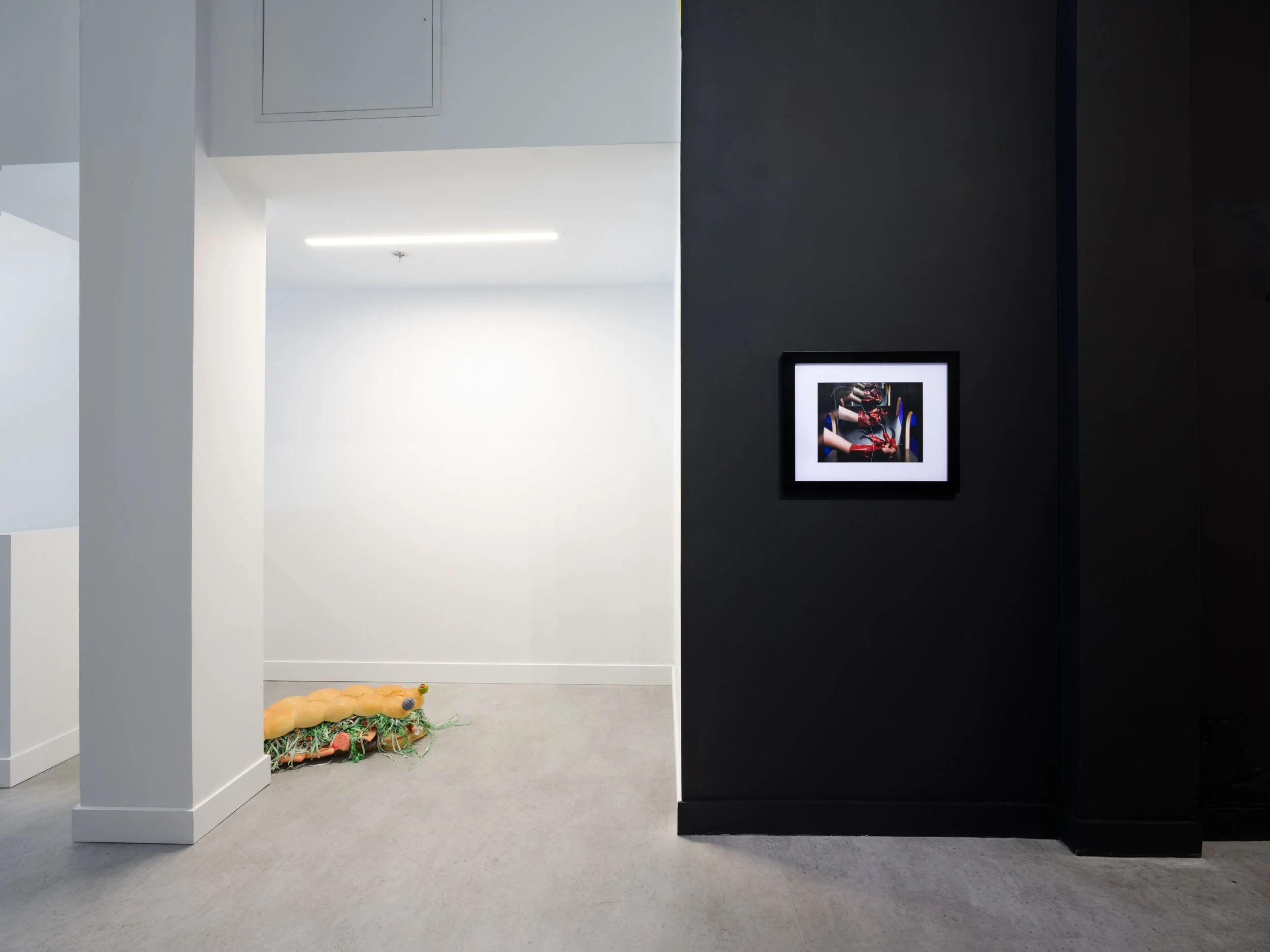
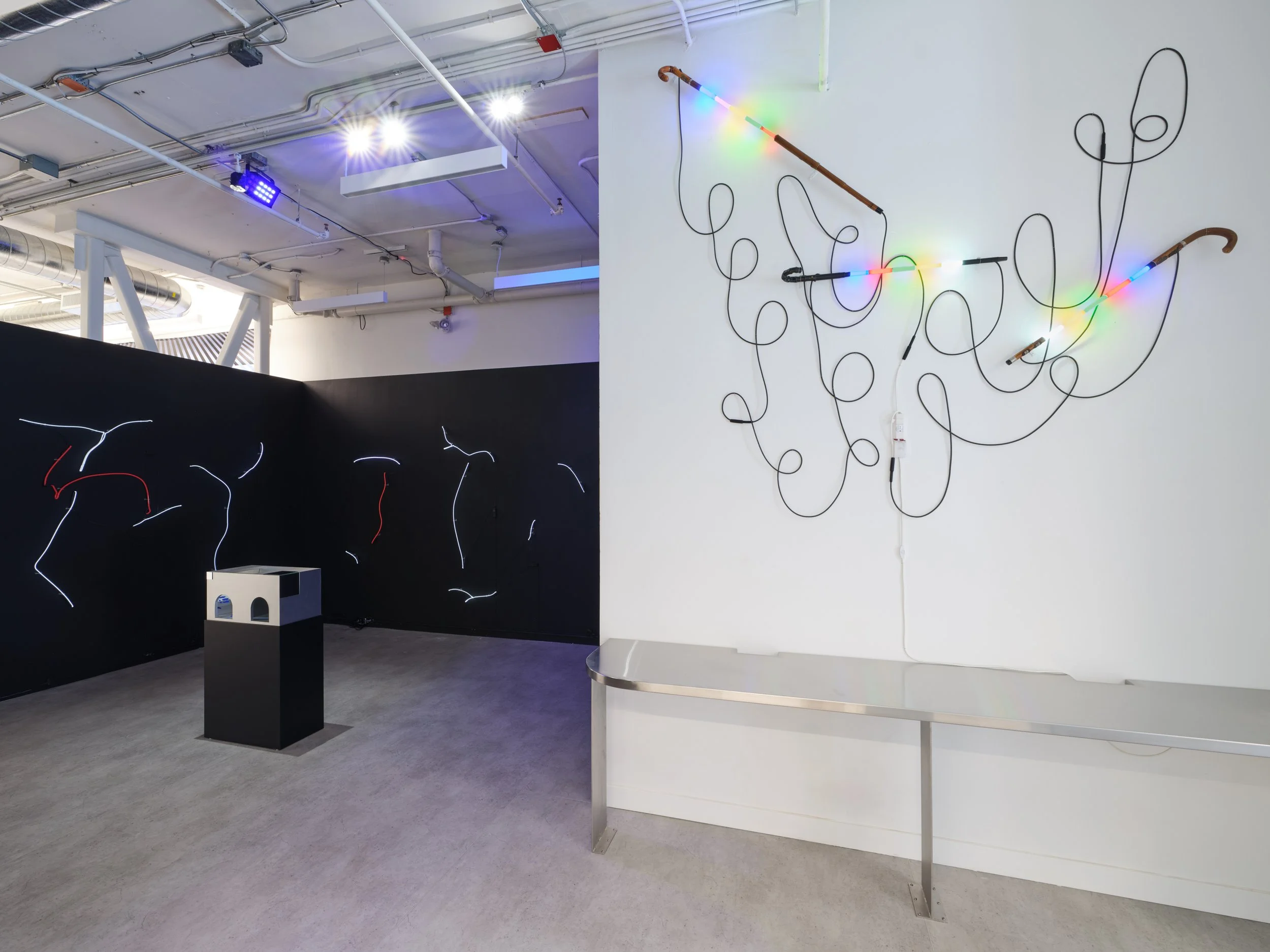
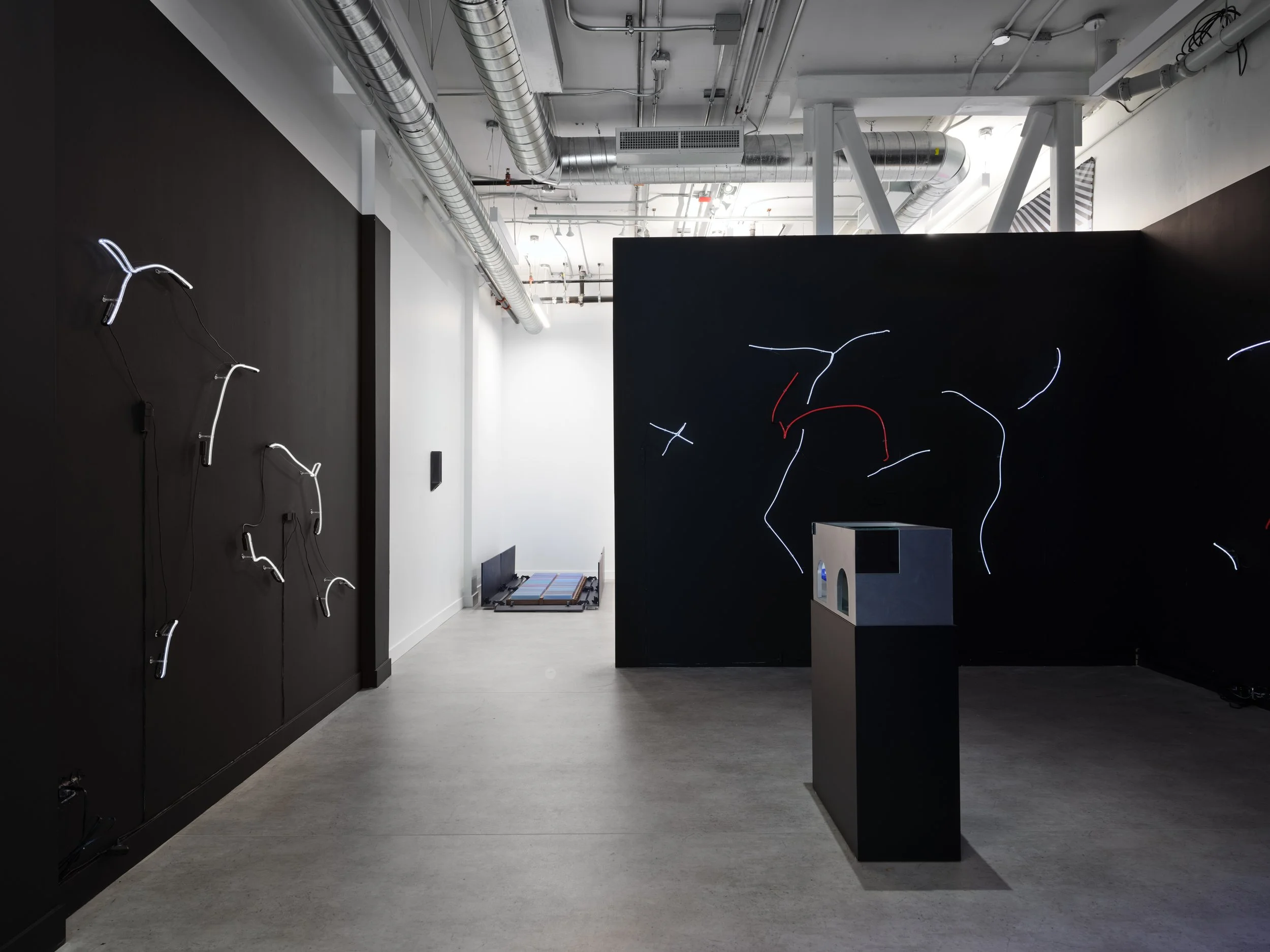
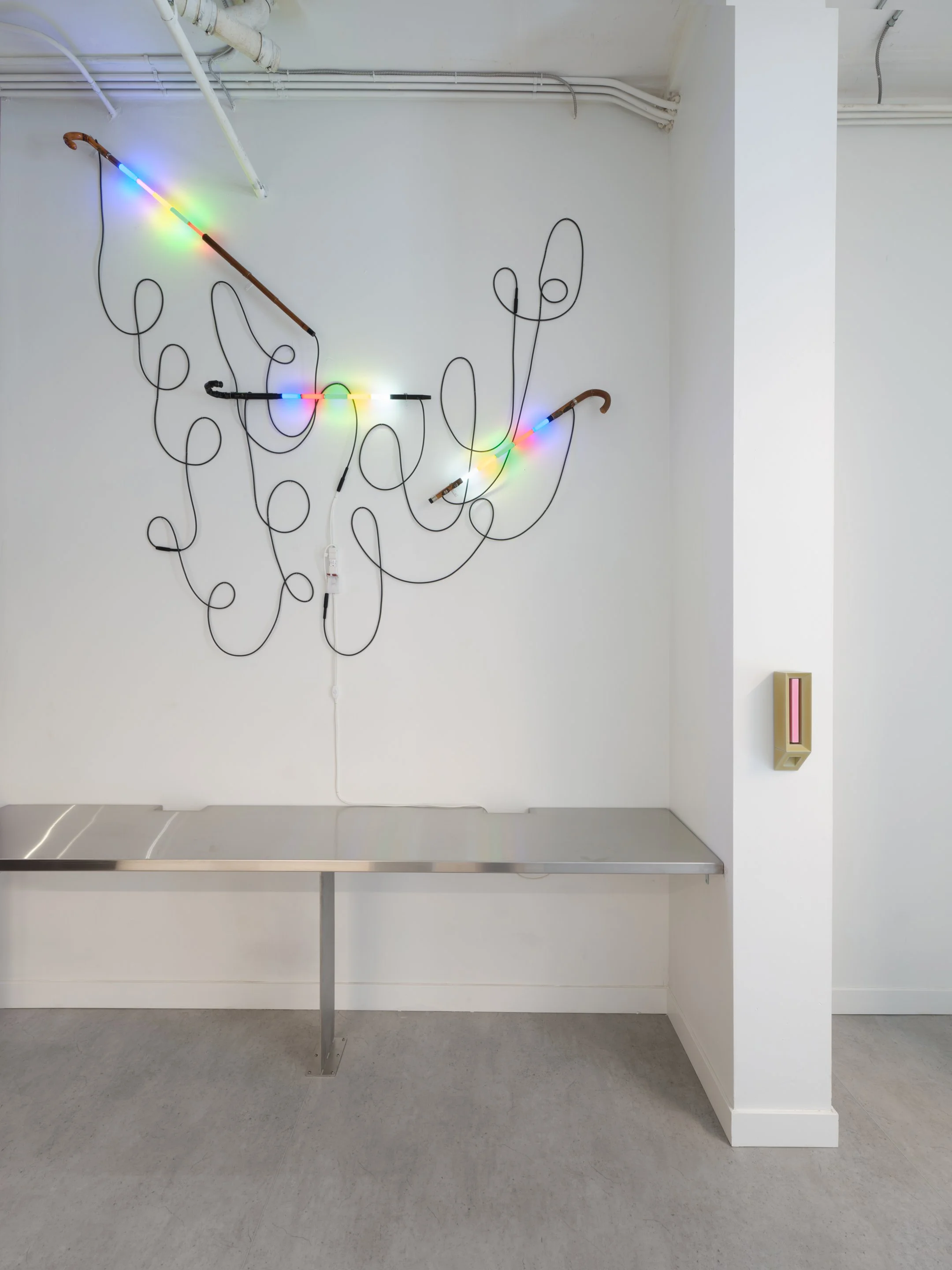
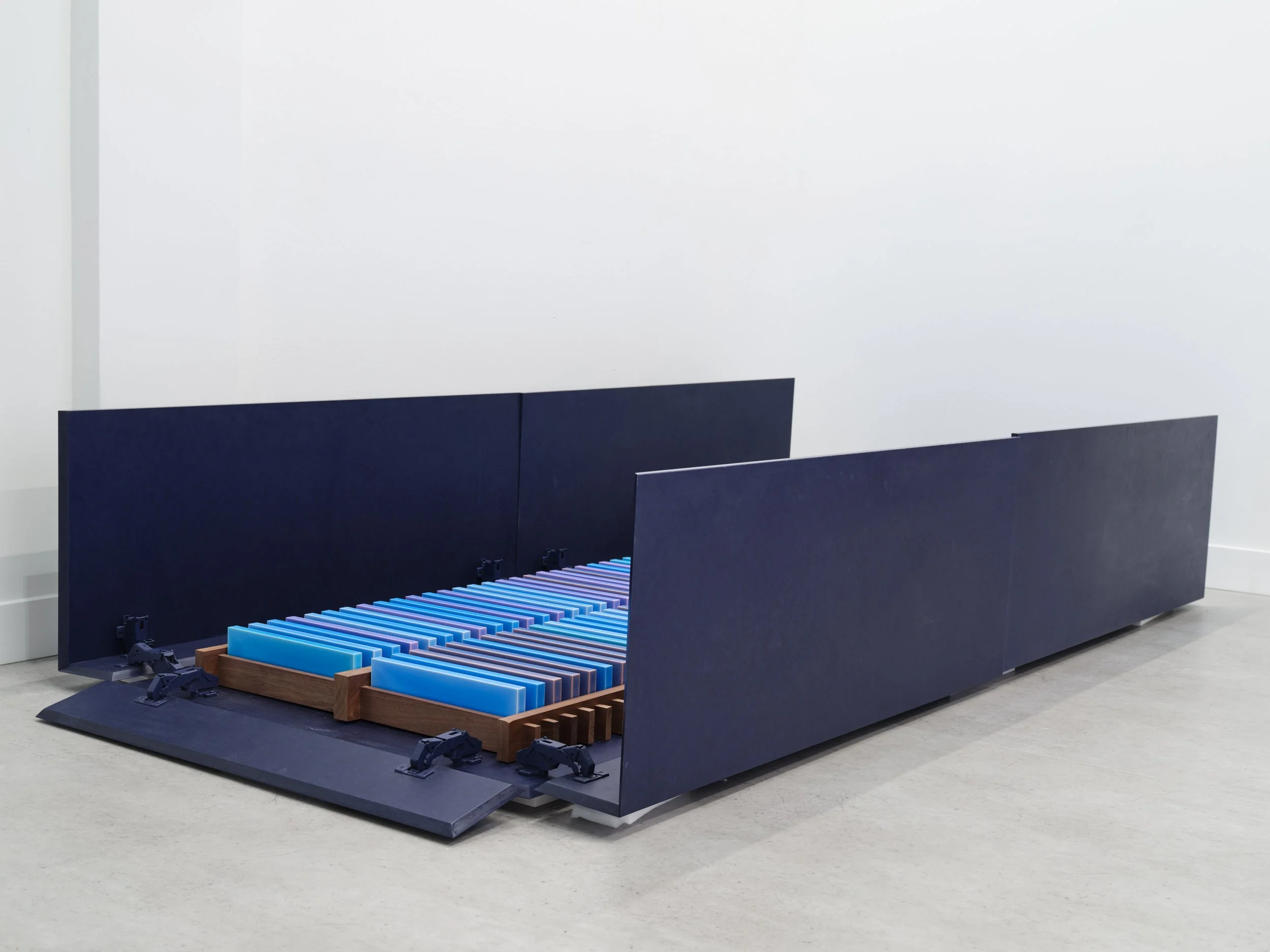
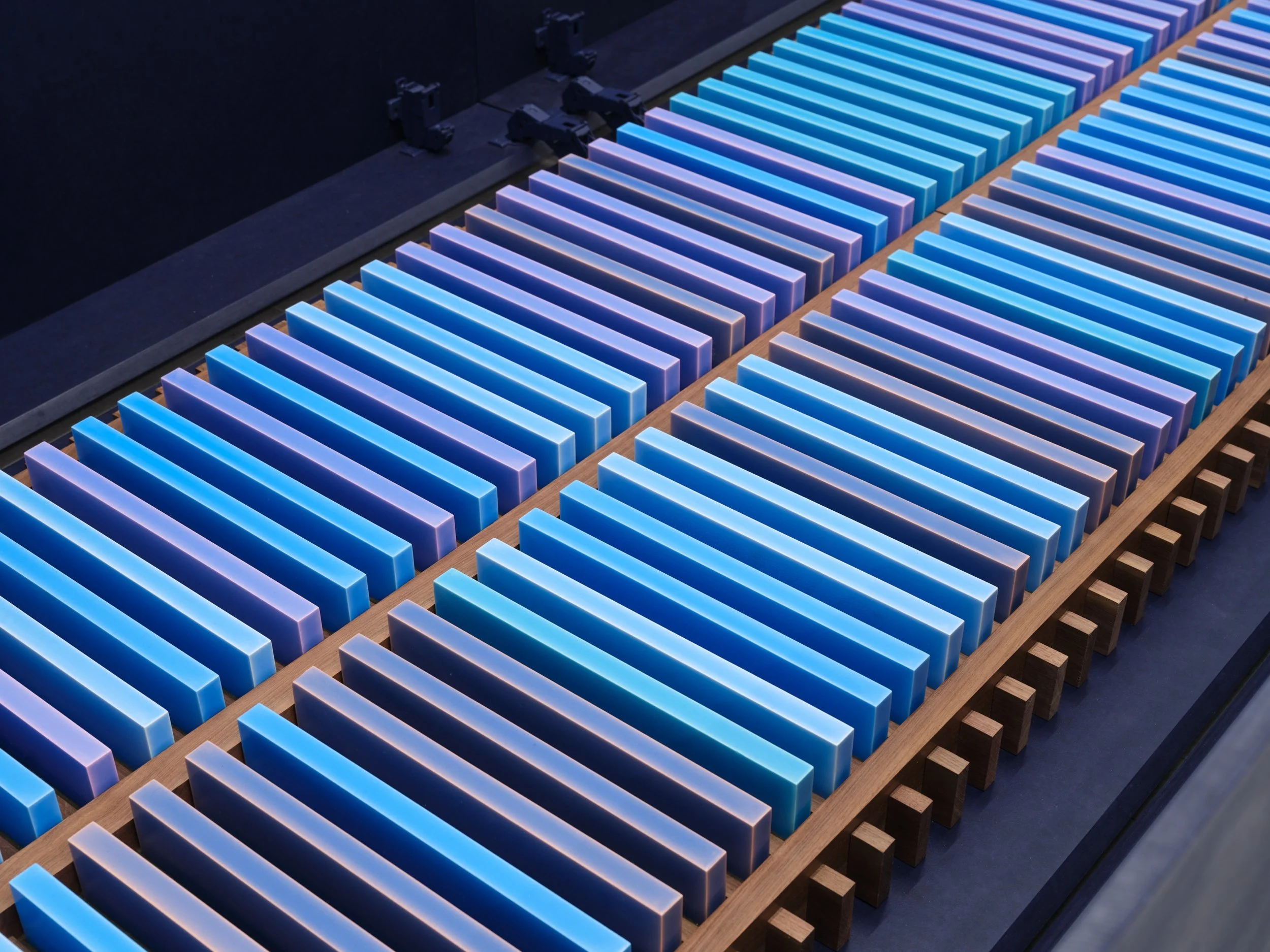
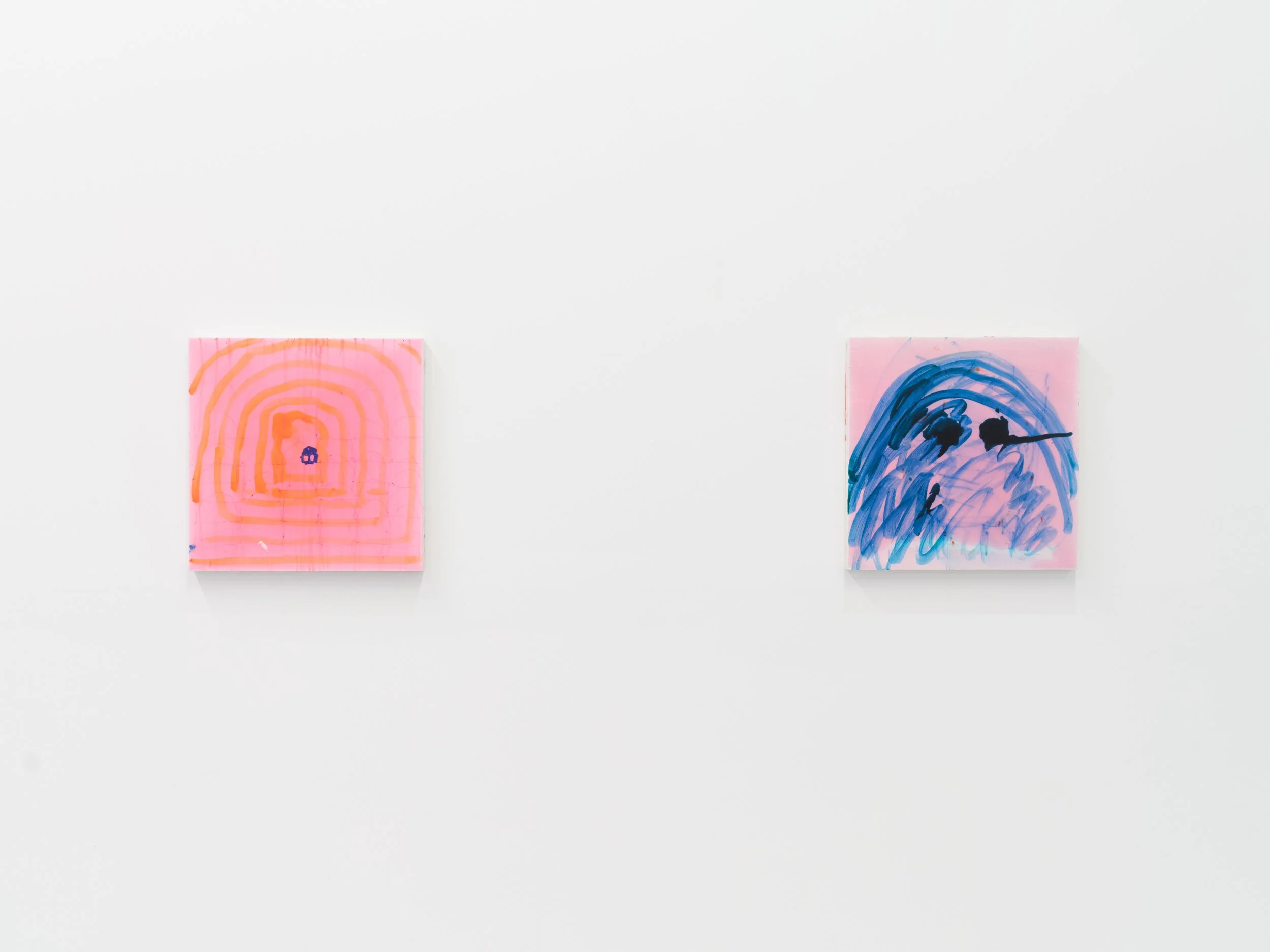
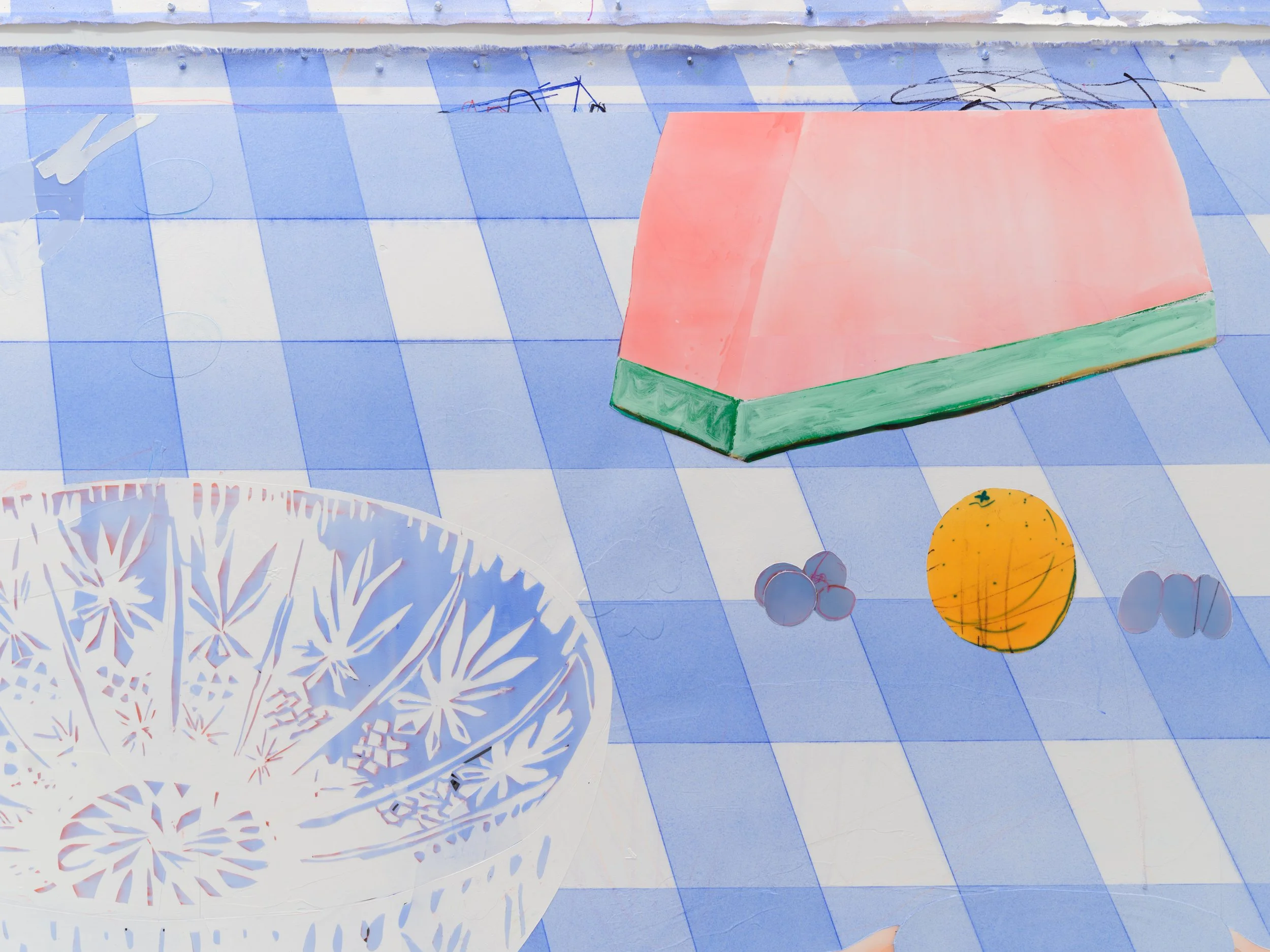

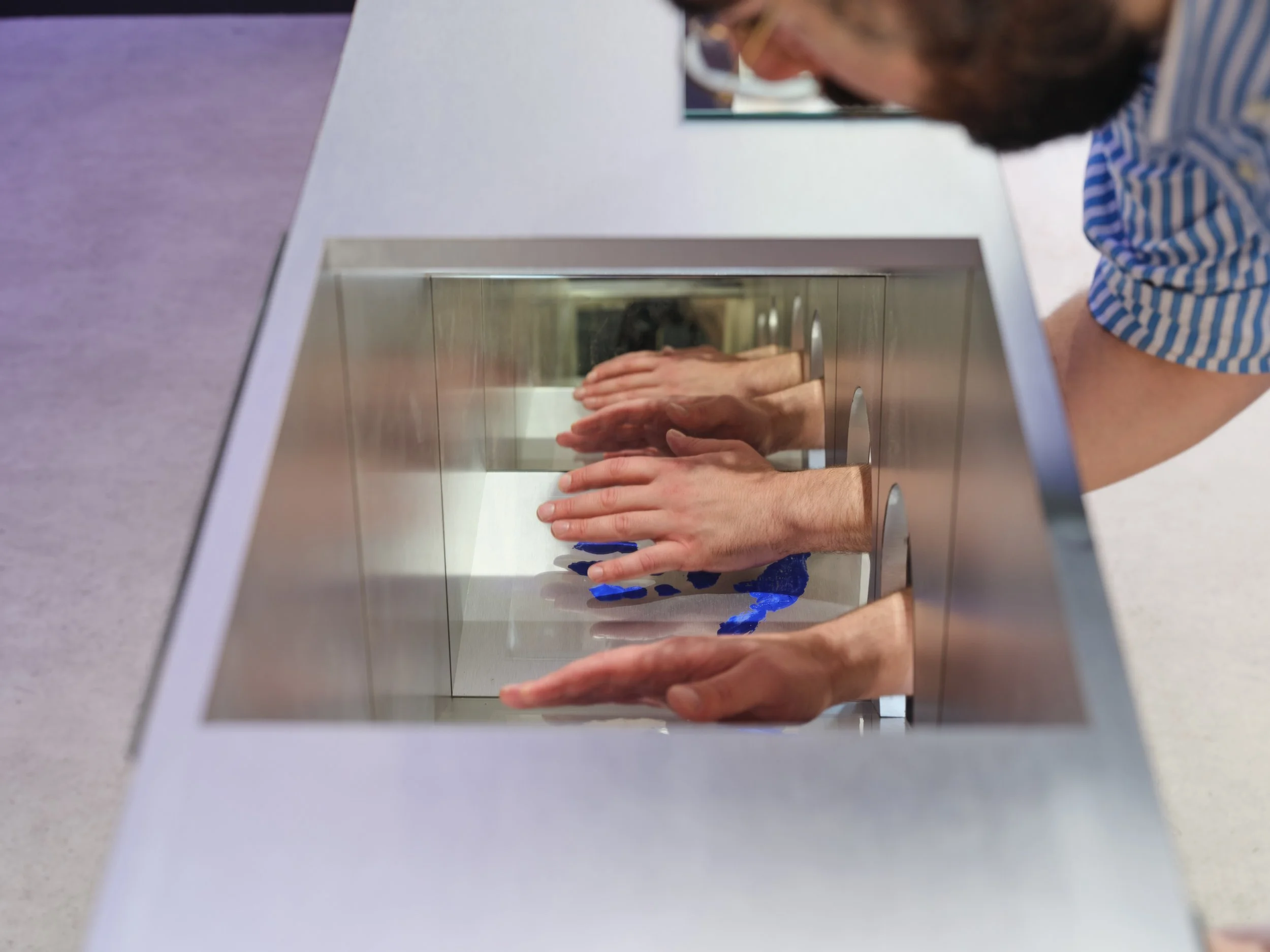

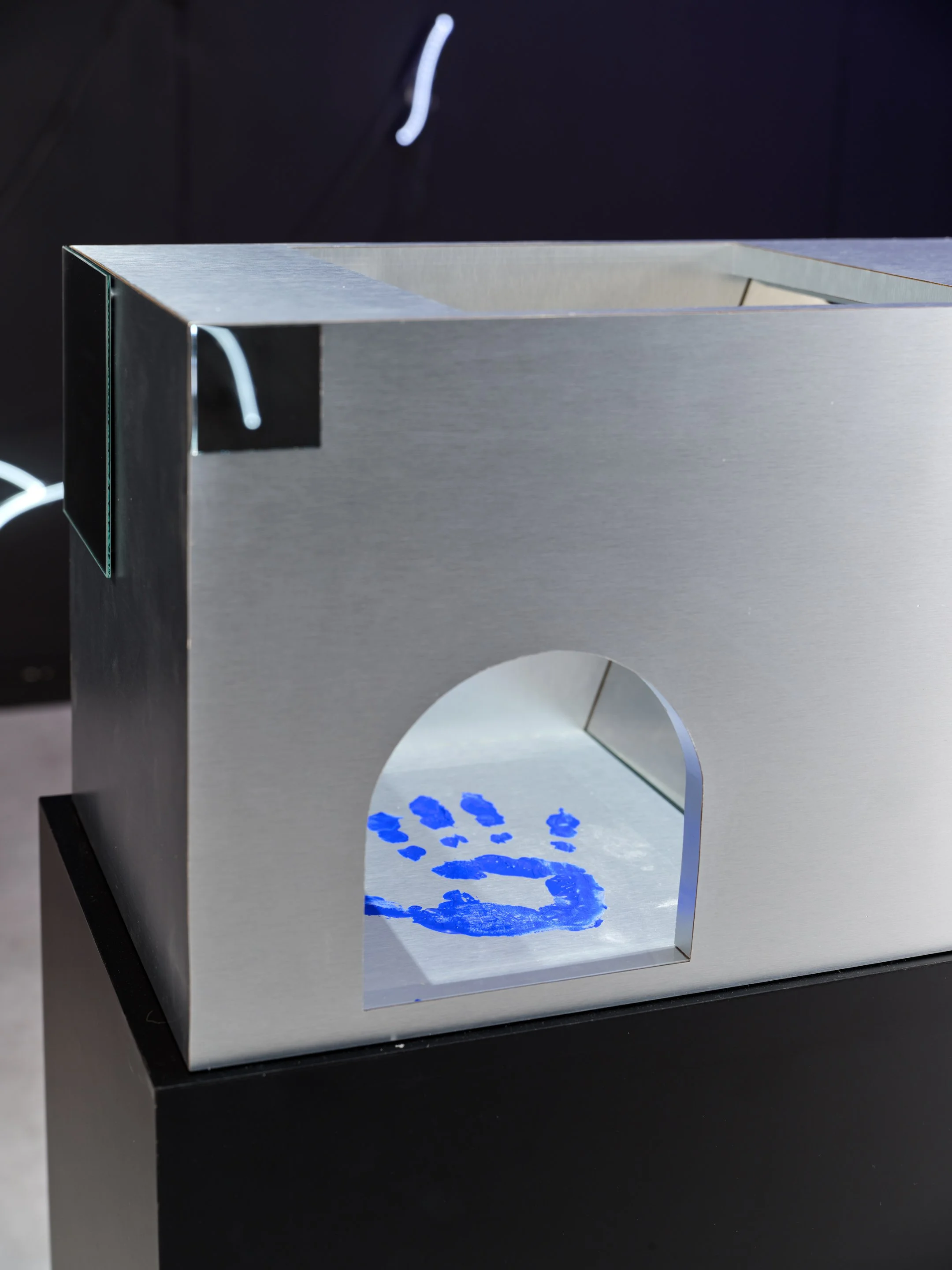
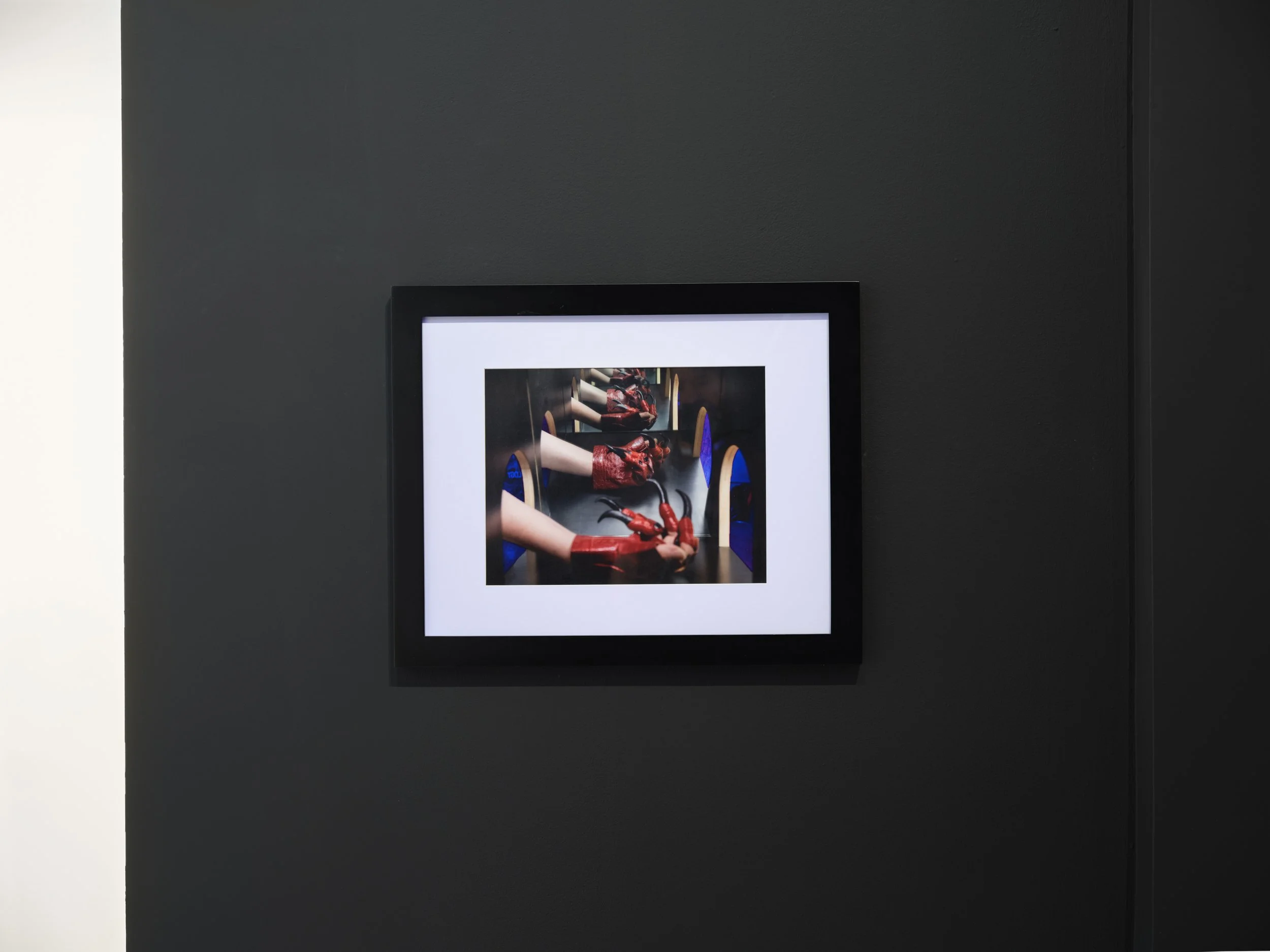
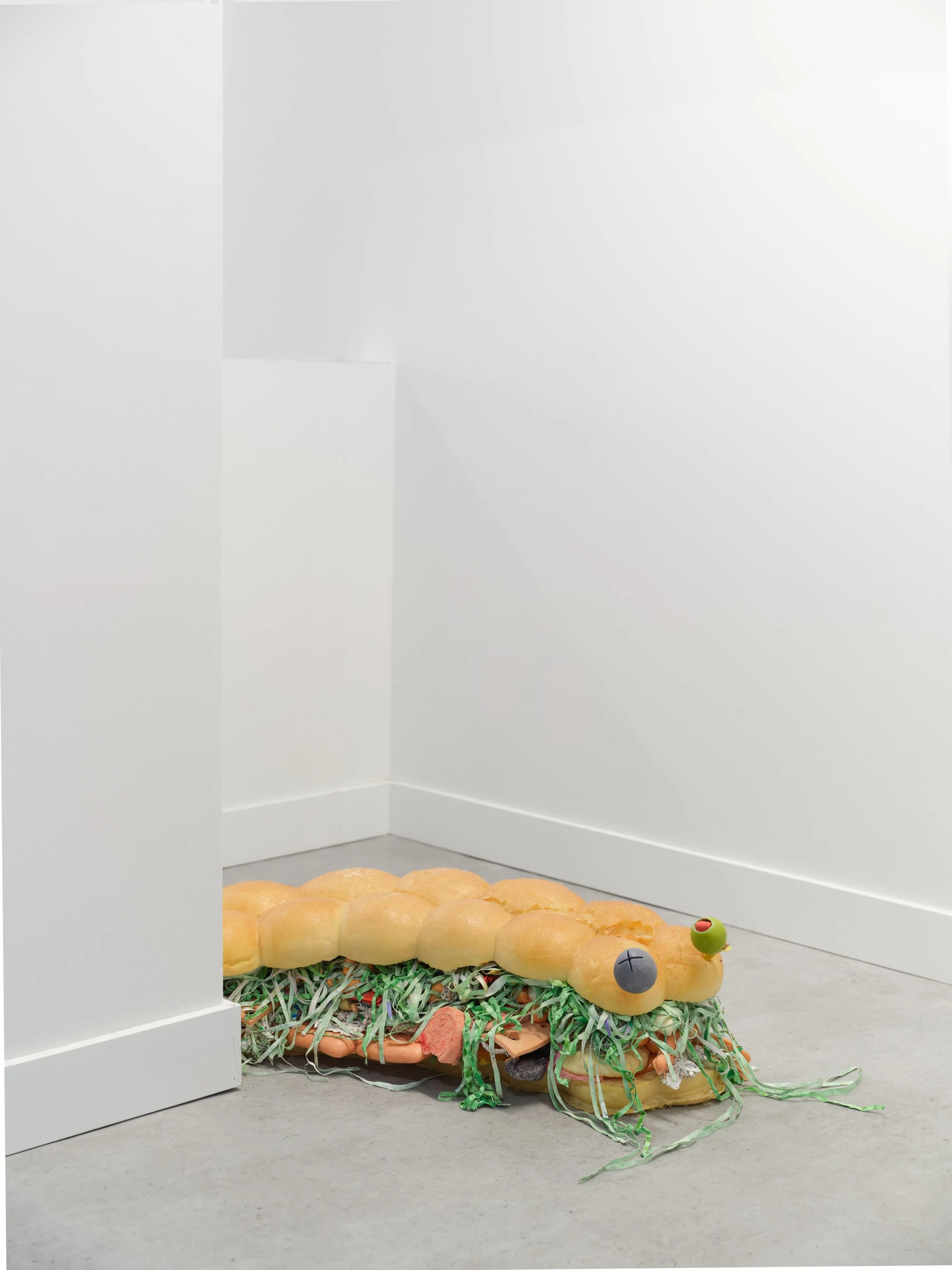
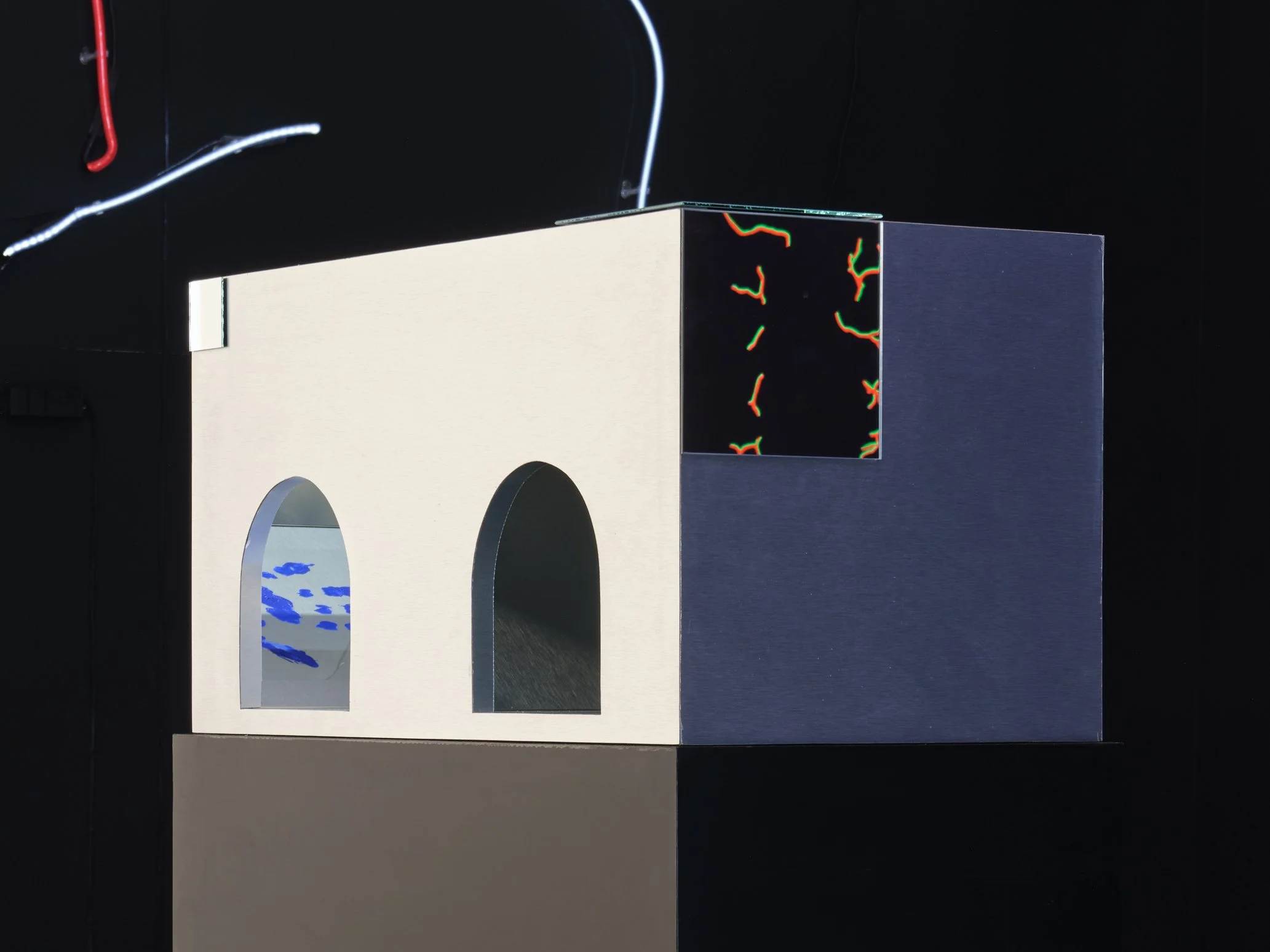
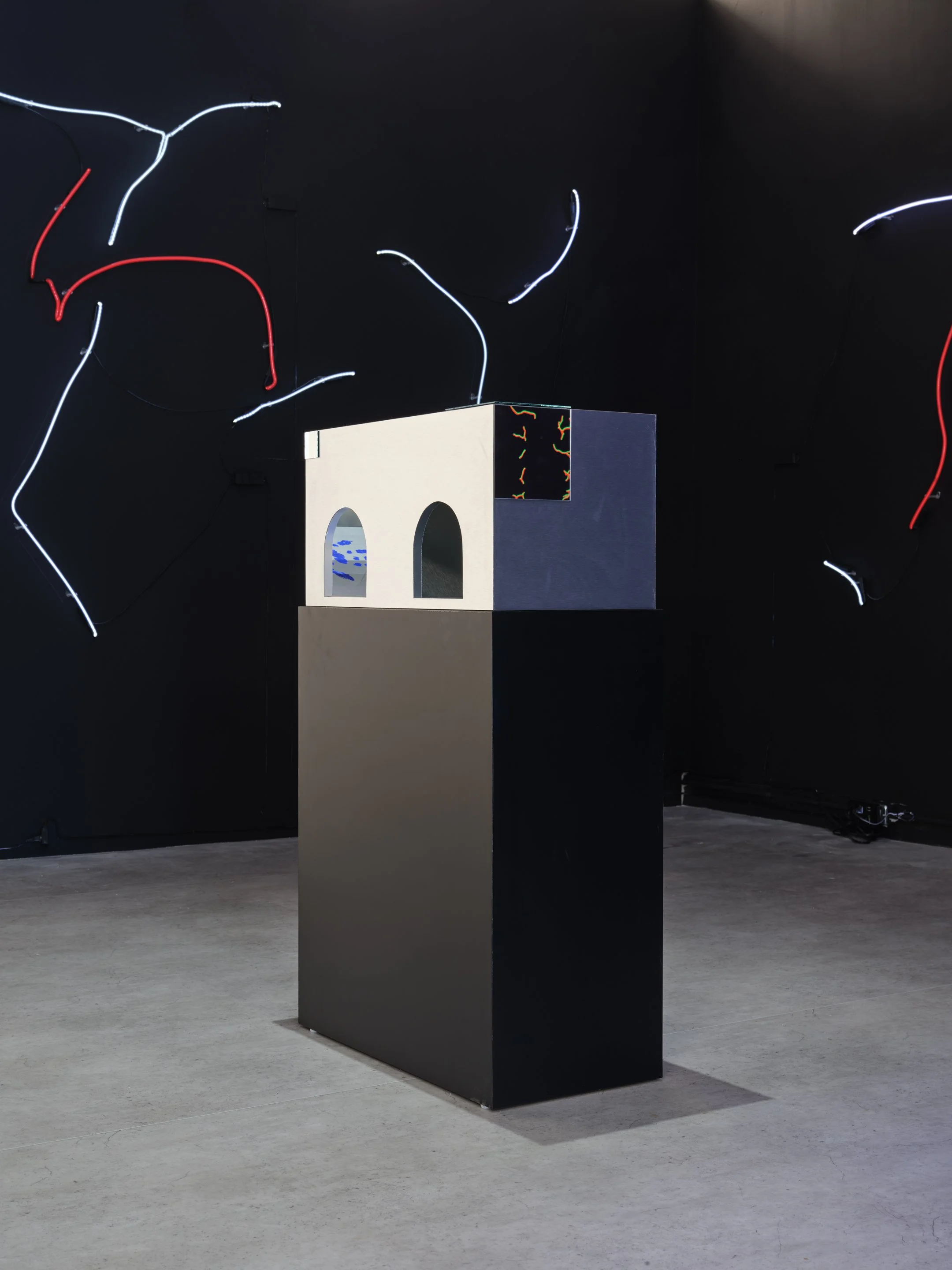
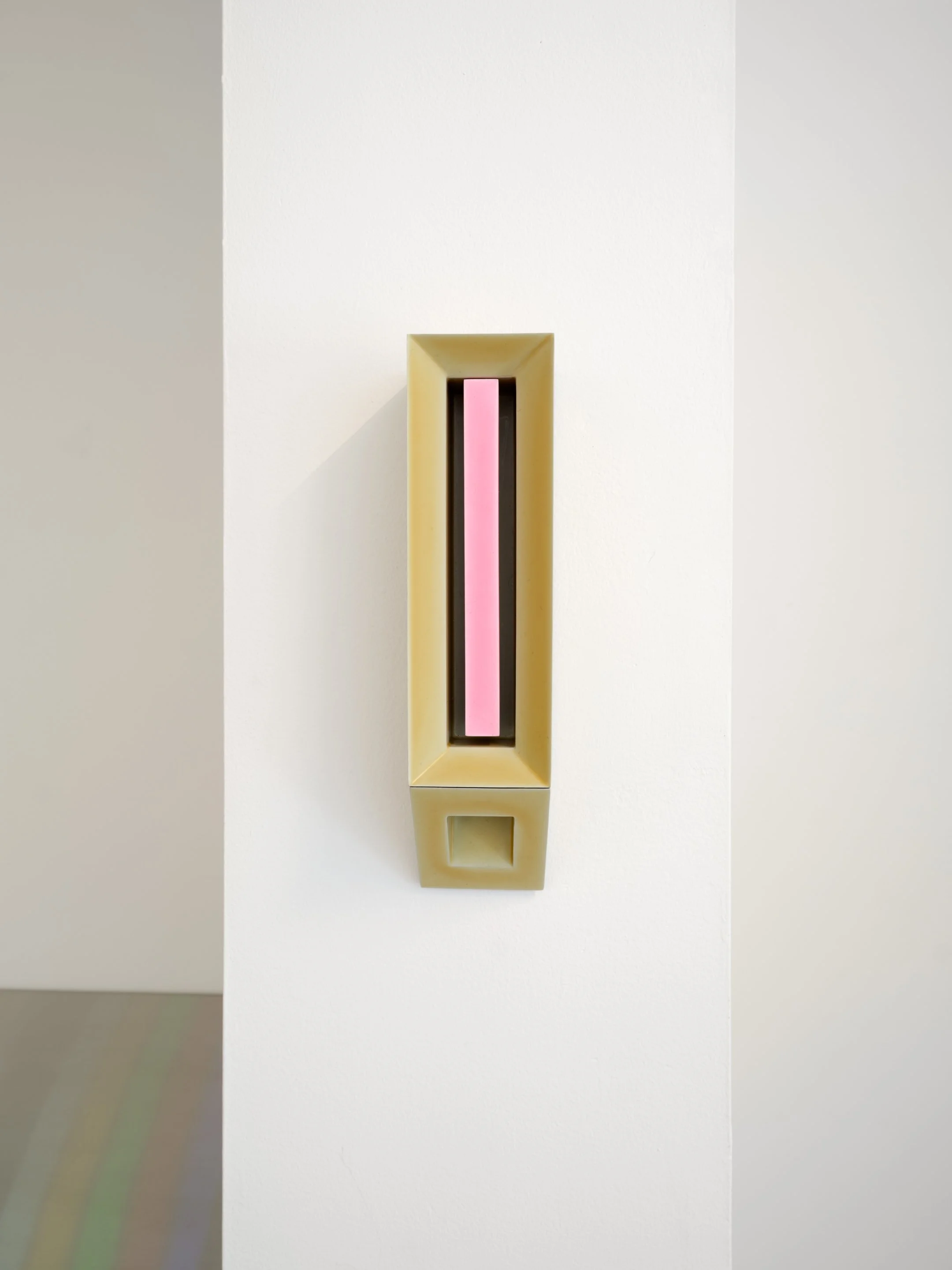
Von Coffin works in sculpture, painting, and food service. They carefully translate the hues and sheens of jellybeans, marshmallow Peeps, and snack foods into their paintings and the blocks inserted into their sculptures. A cozy paradox forms around this question: what does it mean for something to have a yellow color and taste that “is” lemon or banana, but not be a lemon or banana? Coming out of the tradition of the Chicago Imagists, Coffin continues their investigation of bright colors, symbolism, and distorted stylized comic depictions to merge outsider art, art history, and the urban. Von Coffin is a member of the Seattle artist-run space, Specialist, and runs an experimental sculpture park on their family’s farm in Redmond, WA.
Warren Neidich was trained in fine art, architecture, and medicine. He is a wet conceptualist—an alternative historical thread of conceptual art Neidich has identified in contrast to the “dry”—engaging emotion, colour, material, humour, and activism in an age of cognitive capitalism. His professional and theoretical contributions are an important aspect of his art practice. Neidich founded the Saas-Fee Summer Institute of Art, of which he has been the director since 2015. He is the editor of the three–volume collection the Psychopathologies of Cognitive Capitalism (2013, 2014, and 2017). The fourth edition of Neidich's Glossary of Cognitive Activism was recently published by Eris.
Coffin and Neidich’s artworks operate on individuation and becoming, unblocking what Gilbert Simondon calls the Image Cycle in Imagination and Invention—a developmental process in which images and objects are phases of a cycle of anticipation, experience, systemization and ultimately the invention of a solution to a problem of life, starting the cycle anew. If halted, tensions build, reaching a point of pathology akin to what is explored in the emerging Ecological–Enactive model of disability, where health is seen as the ability to ‘transcend what in the current situation is experienced as normal in readiness for (instead) a near open-ended number of other possibilities that may lie on the horizon.’ Individuals can lose the ability to invent potential new actions, what J.J. Gibson terms “affordances” within ecological psychology. In our current time of social media, crisis upon crisis, neuromarketing and algorithmic mediation, our once meandering paths of thought have been forcibly rerouted to build the transcontinental railways of our age.
For Evan Thompson, “cognition is not the grasping of an independent, outside world by a separate mind or self, but instead the bringing forth or enacting of a dependent world of relevance in and through embodied action.” Von Coffin and Warren Neidich build a neural diverse future, innervating neglected and forgotten zones; biologically, psychologically and socially. These artworks break the spell of a stuck and homogenized rational mental model, helping each of us to discover our own affordances—to enact a society in which all have reclaimed the very processes of action and realization, thereby reconnecting our collective guts, brains and hearts.
Sol Hashemi
Associate Curator and Operations Director
Gallery Gachet thanks Canada Council, BC Arts Council, and the City of Vancouver: Arts, Culture & Tourism for their generous support.
Outro
Danielle LaFrance On Picnic For a N(n)ervous System
(What Might Halt This Writing)
“There is no possible subjective approach to the brain. Nobody feels their own brain … the only possible personal approach to the brain is impersonal because it is mediated by technical imagery” – Catherine Malabou, Plasticity: The Promise of Explosion (2022)
This writing was initially raised in reference to this segment of writing from Sol Hashemi’s intro to Picnic For a N(n)ervous System: Von Coffin & Warren Neidich: “If halted, tensions build, reaching a point of pathology […]”¹ In this writing, this outro imagines itself as image first, before typed and actualised, becoming another kind of image of text in a cycle of problem-solving. Right now the problem is what might halt this writing from experiencing an art exhibition and the solution is writing an experience of an art exhibition. What might halt this writing
(conjecture, attention span, articulating an art object into this writing)
are not these bracketed things denying the act of writing using the brain's "continuously changing synaptic networks”²
to illustrate how this writing might constantly form and reform. What might halt this writing is consciousness. There's much ado going on behind the scenes, a dearth of unconscious activity, and this writing doesn't even know! What!? While this writing has been at a loss for synapses “as a result of the pruning of those synapses”³ from an under-stimulating (is, that, true?) world between childhood and adulthood, it relies on neuroplasticity as it is gained by way of new and more experiences. That at the very least, is the aim and the moving target of this writing. Judgements and information filtering cozy up for more lasting storage. And this writing might like to explode these functions. But for now,
picnic, from the French pique-nique, is practically a portmanteau in this writing, meaning to peck at trifles. (Referencing etymology in this writing is also a familiar trope to ground this writing in the origins of some make-believe word.)
In this writing each peck (peck, peck, peck) sends a signal throughout the body of this writing. Increasing neuron responsiveness is directed at a monstrous sandwich, slinking humorously to the wayside. That experience was a laugh. (Ha, ha, ha.) This writing is reminiscent of the story of 1762’s Earl of Sandwich, who, upon hunger and not wanting to leave his card table, ordered a roast beef between two slices of bread. What is the story of the servant who made this technology? The sandwich became ubiquitous with the Industrial Revolution as the new speed of labour production required quick and easy meals with not too much mess, and working conditions that would comply.
(Later plastic bread, later dough conditioner, later on-brand pedophile.)
And Western Asia has been slopping a wonderment of delicious layers to peck off of flat bread
(hard-boiled eggs, oil, fried eggplant)
since the Neolithic Revolution. All to write, this writing is suspicious of supposed inventors who will not leave the comforts of their game playing.
Increasing neuron responsiveness is directed at visible Einsteinian synapses of the exhibition, this microscopic gap between communications, illuminated by black light paint and illumination illuminating in this writing the unconscious
(invisible)
experience of visual processing as it begins with the physical reception of light and near-instantaneously cooked by memory encoding and reflexive thought.
(What is the etymology of illumination?)
And so this writing fries and sizzles the open-ended possibilities of images and objects
(watermelon, Cronenberg, Tron)
as they might conjure other impressions of things, bringing this writing into not languid conversation per se but immediate response of embodied remembrance. And this, for example, is a part of the immediate response that might halt this writing.
Familiar things are anchors for old experiences to be recalled anew. The mirror box is familiar, this writing might know about that later. Vilayanur Subramanian Ramachandran’s mirror box relieved pain by inducing the imagination of an amputee to enable motor control over a missing limb. This writing wonders if it can fit all the parts that make up the whole of this writer’s head inside the box. What prevents relieving the other of their pain is often rooted in maintaining one’s comforts that breed complacency. This writing,
that writing: “We are no longer proletariats working on assembly lines and making objects and things, but rather cognitariats working in front of screens, searching the web, and liking posts on Facebook and Instagram."⁴
The factory does exist! It’s here and there! A Palestinian prisoner had his leg forcibly amputated by the IOF and he is still here! This writing puts a screen in the mirror box, this writing’s bassinet, and the labour conditions from which it derived direct message back: If the workers of the world must still unite than the workers, the cognitariats, cannot distinguish themself from other workers mining cobalt
(a critical mineral, rechargeable lithium-ion batteries, modern electronic power)
in the Democratic Republic of Congo. And this writing once cared, but now it cares little for a group of like-minded individuals.
Attention to comforts and a labour that cannot recognize the exploitation it outsources must be rendered painful to prevent upgrading, to prevent not fitting into the established network of likeness. Nestle this writing like a watermelon used for a baby bumps on a blue-white checkered table cloth that stretches beyond its intended purpose as a table cloth towards a horizon to become something else entirely, just as ash is simply ground up bone is still bone in another “new form.”⁵ What is an uncommon pathway for this writing if not located alongside the picnic’s tract, formed scrumptiously inarticulable yet perfectly informed once communicated.
What might halt this writing is simply when it stops meandering. And so it won’t as it continues its becoming (bright, wet, imagined) elsewhere.
Hashemi, Sol . “Picnic for a N(N)Ervous System: Von Coffin & Warren Neidich.” Gallery Gachet, 3 Sept. 2025, gachet.org/past-events-and-exhibitions/picnic4anervoussystem. Accessed 22 Nov. 2025.
Schaag, Katie. “The Pleasures of Teaching Plastic.” Edge Effects, 2 Oct. 2018, edgeeffects.net/teaching-plastic/.
Neidich, Warren. An Activist Neuroaesthetics Reader. Archive Books, 2021
ibid
Coffin, Von. “Picnic for a N(n)ervous System: a collaborative booklist between Gallery Gachet and Carnegie Branch.” Vancouver Public Library, 2025, vpl.bibliocommons.com/v2/list/display/1338128189/2838971897.
Danielle LaFrance is a poet and information malprofessional. Their commitments are anchored to liberation, resistance, and pleasure. LaFrance is the author of speciesbranding (Capilano University Editions, 2010), Friendly + Fire (Talonbooks, 2016), JUST LIKE I LIKE IT (Talonbooks, 2019), and #postdildo (Talonbooks, 2022); chapbooks include Tentacle Rasa (Asterion Books, 2021) and pink slip (Standard Ink & Copy, 2013). Their forthcoming book Verbal Violence (Talonbooks 2026) shreds the language of the professional managerial class, confronting a purposeless people “just doing their job.”

